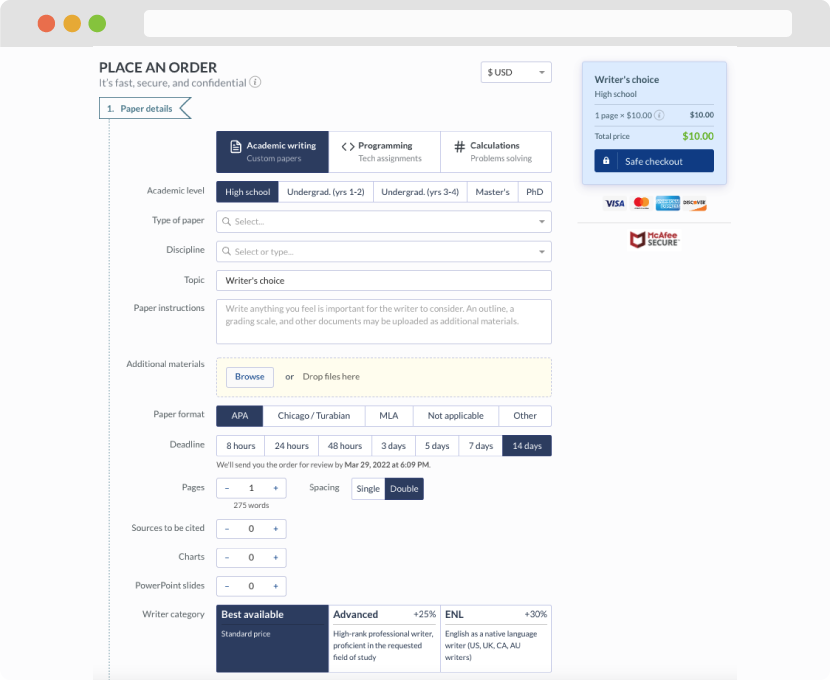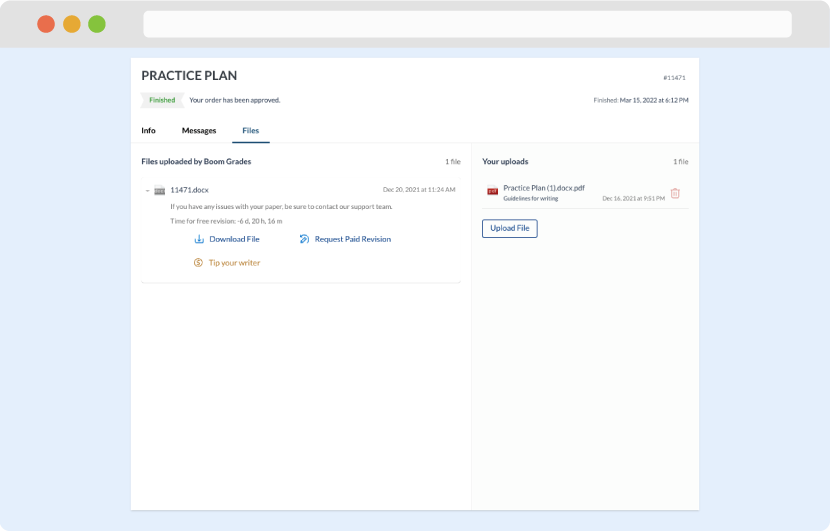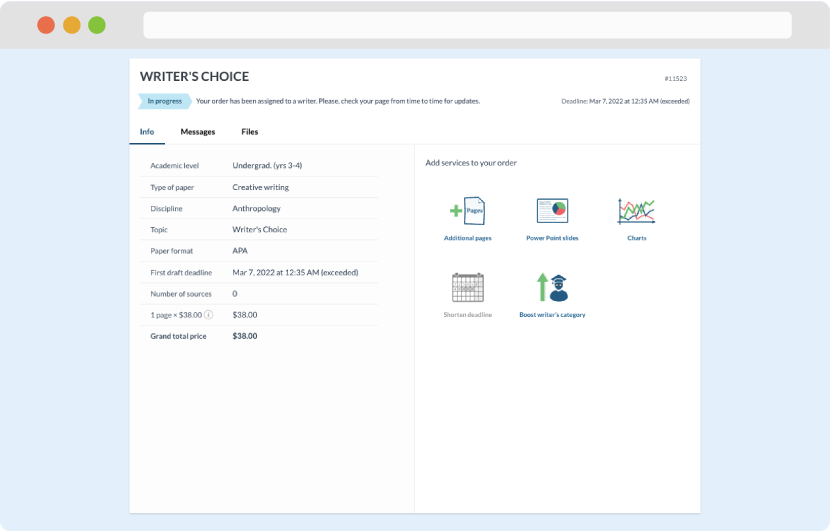Overview
Create a one-page (front and back) information fact sheet about an adolescent development issue, designed for the general public.
Note: The assessments in this course build upon each other, so you are strongly encouraged to complete them in sequence.
When working with organizations that address adolescent development issues, a developmental psychologist will often need to condense and translate information for the consumption of the general public.
By successfully completing this assessment, you will demonstrate your proficiency in the following course competencies and assessment criteria:
IMPORTNANT
Competency 1: Analyze how theories of development and related research explain aspects of adolescent growth and behavior.
Identify key theories and research relevant for the intended audience.
Competency 3: Assess evidence-based interventions to address adolescent developmental issues.
Recommend best practices that are relevant for the intended audience.
Competency 4: Communicate in a manner that is consistent with expectations for professionals in the field of psychology.
Use grammar, punctuation, and mechanics expected of graduate-level composition and expression.
Use APA format and style in written documents, with only minor errors that do not detract from meaning.
Context
Historically, researchers have attempted to consider adolescent challenges by considering relevant risk factors (for example, maternal depression) that predict negative adolescent outcomes. More recent research has moved toward a focus on protective factors and resiliency as opposed to a focus on risk factors when thinking about challenges with adolescence (Kim, Oesterle, Catalano, & Hawkins, 2015). For example, Benson’s research (as cited in Santrock, 2019) found the following external and internal assets related to positive developmental outcomes for adolescents.
The external assets include the following:
Support (such as family and neighborhood).
Empowerment (such as adults in the community valuing youth and giving them useful community roles).
Boundaries and expectations (such as the family setting clear rules and consequences and monitoring the adolescent’s whereabouts, as well as the presence of positive peer influence).
Constructive use of time (such as engaging in creative activities three or more times a week and participating three or more hours a week in organized youth programs).
The internal assets include the following:
Commitment to learning (such as being motivated to achieve in school and doing at least one hour of homework on school days).
Positive values (such as helping others and demonstrating integrity).
Social competencies (such as knowing how to plan and make decisions and having interpersonal competencies like empathy and friendship skills).
Positive identity (such as having a sense of control over life and high self-esteem).
Coping involves dealing with adverse circumstances, efforts to solve life problems, and reducing stressors (Santrock, 2019). Several strategies for coping in adolescence include positive and optimistic thinking, increasing personal self-control and avoiding immediate gratification, seeking social support, seeking professional counseling help, and using multiple coping strategies since a combined effect may help to cope successfully (Santrock, 2019).
While there are several challenges related to navigating adolescent development, the good news is that the vast majority of teenagers are successful in their navigation of adolescence and gain the requisite skills for developing into autonomous and resilient adults.
References
Kim, B. E., Oesterle, S., Catalano, R. F., & Hawkins, J. D. (2015). Change in protective factors across adolescent development. Journal of Applied Developmental Psychology, 40, 26–37.
Santrock, J. W. (2019). Adolescence (17th ed.). New York, NY: McGraw-Hill Education.
Questions to Consider
To deepen your understanding, you are encouraged to consider the questions below and discuss them with a fellow learner, a work associate, an interested friend, or a member of the professional community.
Resources
APA Resources
Because this is a psychology course, you must format this assessment according to APA guidelines, since it is the writing style of the profession. Use the following resources to guide your work. Additional resources about APA can be found in the Research Resources in the left navigation menu of your courseroom.
APA Paper Template [DOCX].
American Psychological Association. (2010). Publication manual of the American Psychological Association (6th ed.). Washington, DC: Author.
Available in the courseroom via the VitalSource Bookshelf link.
SHOW LESS
Suggested Resources
The resources provided here are optional and support the assessment. They provide helpful information about the topics. You may use other resources of your choice to prepare for this assessment; however, you will need to ensure that they are appropriate, credible, and valid. The PSY-FP7230 – Adolescent Psychology Library Guide can help direct your research. The Supplemental Resources and Research Resources, both linked from the left navigation menu in your courseroom, provide additional resources to help support you.
Key Theories on Adolescent Development
Review and reflect on the theories of adolescent development from previous assessments, and consider how you can present them for your intended purpose and audience for this assessment. The following resources on theories are listed here for your review convenience.
Santrock, J. W. (2019). Adolescence (17th ed.). New York, NY: McGraw-Hill Education.
Available in the courseroom via the VitalSource Bookshelf link.
Chapter 1, “Introduction,” pages 1–44.
Meeus, W. (2016). Adolescent psychosocial development: A review of longitudinal models and research. Developmental Psychology, 52(12), 1969–1993.
Recommended Best Practices
The following resources provide research on best practices. You may have resources from your Assessment 3, but also may want to search the Capella library for information on your selected topic. Use your critical thought to apply the information to a specific setting and for a specific audience.
Austin, A., & Craig, S. L. (2015). Empirically supported interventions for sexual and gender minority youth. Journal of Evidence-Informed Social Work, 12(6), 567–578.
Finigan-Carr, N. M., Copeland-Linder, N., Haynie, D. L., & Cheng, T. L. (2014). Engaging urban parents of early adolescents in parenting interventions: Home visits vs. group sessions. School Community Journal, 24(2), 63–82.
St-Pierre, R. A., Derevensky, J. L., Temcheff, C. E., Gupta, R., & Martin-Story, A. (2017). Evaluation of a school-based gambling prevention program for adolescents: Efficacy of using the theory of planned behaviour. Journal of Gambling Issues, 36, 113–137.
Scholarly Articles on Community Health Concerns
The following sources illustrate research that took place on a social or health concern using fact sheets and other community education pamphlets as part of the strategy to raise awareness and effect action. Use these examples to consider how your fact sheet could illustrate best practices and be used in a community to effect change.
Colquitt, G., Walker, A., & Alfonso, M. (2014). Adapting a community-based physical activity promotion program for rural, diverse youth. Physical Educator, 71(3), 514–532.
Podariu, A. S., Podariu, A. C., & Popovici, R. A. (2017). Communication strategy on oral health education for adolescents. Revista de Cercetare si Interventie Sociala, 58, 68–80.
Developing a Fact Sheet
These resources offer formatting and best practice guidelines for developing a fact sheet. It is They are not definitive, but the suggestions may assist you in developing an effective fact sheet for your assessment.
Center for Rural Health. (2018). Communication tools: Fact sheets. Retrieved from https://ruralhealth.und.edu/communication/factsheets
Community Tool Box. (2017). Creating fact sheets on local issues (Chapter 6, Section 15). In Communications to promote interest and participation. Retrieved from https://ctb.ku.edu/en/table-of-contents/participation/promoting-interest/fact-sheets/main
Health Advocacy Toolbox. (n.d.). Fact sheets and action alerts. Retrieved from http://cthealthpolicy.org/wp-content/uploads/2018/04/FACT-SHEETS-AND-ACTION-ALERTS.pdf
ASSESSMENT INSTRUCTIONS
For this assessment, create a one-page (front and back) fact sheet targeted at a public audience (parents, community members, clients, constituents, and so forth). This information sheet should concisely describe the issue at hand, what current research indicates about the issue, and what action items are recommended as a result. You should provide citations within the fact sheet, so that every statement made is clearly documented. Graphics that support rather than distract from the information are encouraged but should not dominate the fact sheet.
If needed, use Fact Sheets and Action Alerts, available in the Suggested Resources, for assistance in developing the format consistent with expectations for a fact sheet.
DIRECTIONS
Identify key theories and research relevant for the intended audience.
Recommend best practices that are relevant for the intended audience.
Use grammar, punctuation, and mechanics expected of graduate-level composition and expression.
Use APA format and style, with only minor errors that do not detract from meaning.
ADDITIONAL REQUIREMENTS
Written communication: Use the accepted form and style of the psychological professions, employing grammar, punctuation, and mechanics expected of graduate-level composition and expression.
APA style and formatting: Format citations according to current APA style and formatting guidelines.
Length of fact sheet: Two pages (intended as the front and back of a single, 8.5 x 11 inch handout).
Public Fact Sheet Scoring Guide
Professional homework help features
Our Experience
However the complexity of your assignment, we have the right professionals to carry out your specific task. ACME homework is a company that does homework help writing services for students who need homework help. We only hire super-skilled academic experts to write your projects. Our years of experience allows us to provide students with homework writing, editing & proofreading services.
Free Features
Free revision policy
$10Free bibliography & reference
$8Free title page
$8Free formatting
$8How our professional homework help writing services work

You first have to fill in an order form. In case you need any clarifications regarding the form, feel free to reach out for further guidance. To fill in the form, include basic informaion regarding your order that is topic, subject, number of pages required as well as any other relevant information that will be of help.
Complete the order form
Once we have all the information and instructions that we need, we select the most suitable writer for your assignment. While everything seems to be clear, the writer, who has complete knowledge of the subject, may need clarification from you. It is at that point that you would receive a call or email from us.
Writer’s assignment
As soon as the writer has finished, it will be delivered both to the website and to your email address so that you will not miss it. If your deadline is close at hand, we will place a call to you to make sure that you receive the paper on time.
Completing the order and download